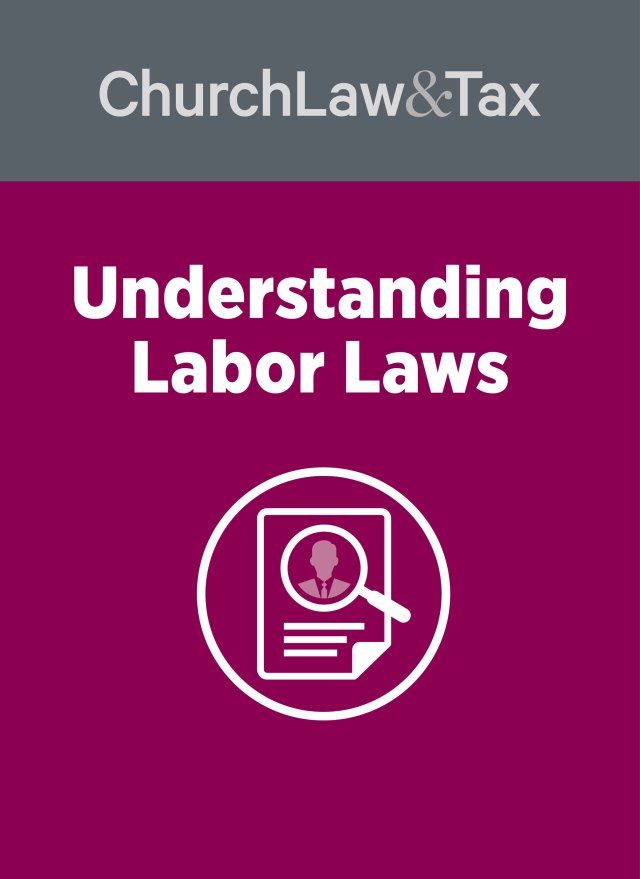• Key point 8-10. The federal Americans with Disabilities Act prohibits employers with at least 15 employees, and that are engaged in interstate commerce, from discriminating in any employment decision against a qualified individual with a disability who is able, with or without reasonable accommodation from the employer, to perform the essential functions of the job. Accommodations that impose an undue hardship upon an employer are not required. Religious organizations may give preference to nondisabled members of their faith over disabled persons who are members of a different faith.
Americans with Disabilities Act
* A federal court in Pennsylvania ruled that a church-operated school did violate the Americans with Disabilities Act by terminating the employment of a teacher whose respiratory illnesses required her to be off work frequently and unpredictably despite the school’s substantial attempts to “accommodate” her disability. A woman (Dianne) was employed by a church-operated school as an elementary school teacher from 1996 until 2001. She also worked as director of the school’s “before and after school program.” Dianne had been diagnosed with myasthenia gravis (a neuromuscular disease) many years before her employment by the school, and school officials hired her with full knowledge of the condition. Myasthenia gravis causes difficulty breathing and muscle weakness, and manifests itself through “crisis periods” that may last anywhere from a couple of days to a couple of weeks. After being hired by the school Dianne also developed reactive airways disease which caused her to have difficulty breathing when she encountered perfume and other chemical irritants.
Dianne’s health-related absences varied over the years of her employment, and ranged from a low of 3 days to a high of 60 days. In addition to health-related absences, she experienced symptoms of reactive airways disease, asthma, and myasthenia gravis that required her to leave work to seek immediate medical attention. Between 1996 and 2001, the school principal drove her to the hospital when she became ill at work. During the times when she left early to seek medical attention, the school would find a replacement teacher to cover her class.
The school made efforts to accommodate Dianne’s medical conditions. After some myasthenic crises the school allowed her to go on an alternative work schedule and hired a substitute teacher to cover the days and hours when Dianne was absent. The school continued to provide a salary and health insurance coverage so that she would not suffer a financial hardship.
Dianne’s medical conditions impacted other aspects of her job. Due to her reactive airways disease she did not attend some school-related activities and events where teachers who wore perfume would be present. She did not attend daily faculty meetings, annual faculty retreats, district meetings, and monthly worship services in order to avoid having an asthma attack. The school never required her to engage in an activity that could lead to an asthma attack, even though the activities were a part of her teaching responsibilities. The school principal also asked faculty members to stop wearing strong perfume, explaining that Dianne could not be around the perfume.
In 2001 Dianne suffered a myasthenic crisis the day before the new school year began. She was hospitalized on that day and released three days later to begin recuperating. After consulting with her doctor, she informed the school principal that she would be able to return to work in two weeks. Before allowing Dianne to return to work, the principal informed her that she would need a doctor’s certification stating that she could “assume all of the encompassing duties of a second grade elementary school teacher and that [she is] able to move freely throughout the classroom and school attending to those duties.” Dianne’s doctor sent a letter stating that while Dianne could return to work without limitation of movement in the classroom, her future clinical status was unclear, as her disease could return at any time without clear warning. The principal informed Dianne that she would have to provide proof of her ability to provide “consistency and continuity” in coming to work every day. Dianne responded that she could not, acknowledging the unpredictable nature of her disease. As a result, the principal offered her employment alternatives within the school, including a full-time substitute position. Dianne rejected every alternative because she felt was that she was capable of working in her current position. She informed the principal that the school would have to fire her because she would not quit.
Dianne sued the school, claiming that she was discriminated against as an employee on account of her myasthenia gravis and reactive airways disease. Specifically, she claimed that the school violated the Americans with Disabilities Act by failing to “accommodate” her disability.
prima facie case
In order to establish a prima facie case of discrimination under the ADA, a plaintiff must show that: (1) she is a disabled person within the meaning of the ADA; (2) she is otherwise qualified to perform the essential functions of the job, with or without reasonable accommodations by the employer; and (3) she has suffered an adverse employment action as a result of the discrimination.
The court concluded that Dianne was disabled because she was “substantially limited in the major life activity of breathing.” But, it concluded that she was not qualified to perform the essential functions of the job with or without reasonable accommodations by the school, and therefore she failed to prove a prima facie case of discrimination. The court observed,
An employee who does not come to work on a regular basis is not “qualified” under the ADA …. The record in this case demonstrates that Dianne has not been able to provide regular and reliable attendance throughout her employment. From 1996 until 2001, she consistently experienced health-related absences. During at least two school years, she could not meet the school’s annual attendance requirements. In the fall of 2001 she suffered a myasthenic crisis, causing her to miss the beginning of the new school year. In addition to her sometimes lengthy absences, her absences were unpredictable. The onset of a myasthenic crisis at times happened while she was at school, causing her to seek immediate medical attention. At the time of her termination neither Dianne nor her doctors could provide the defendants with any indication that she would be able to work regularly due to the unpredictable course of her illness.
The court noted that for many years the school “went to extraordinary levels to accommodate Dianne’s needs,” including permitting her to take absences whenever she became ill for as long as she needed; excusing her from attending daily faculty meetings, monthly worship services, annual faculty retreats, district meetings, and other required teaching duties so that she could avoid potential triggers of an asthma attack; finding teachers to replace her when she became ill or when she did not attend school activities with her students; permitting her to leave work early when she became ill and rushing her to the hospital; allowing her to work on a reduced work schedule; and allowing her to take a long-term disability. Dianne agreed that up until the time of termination, the school provided all the accommodations that she requested.
Dianne insisted that because the school allowed her to take off whatever time she wanted whenever she wanted, it must continue to do so. The court rejected this argument, noting that “when an employer has exceeded the ADA’s requirement of reasonable accommodation, its decision to discontinue the accommodation does not give the plaintiff a cause of action against it.” The court concluded,
The school’s past accommodations of Dianne’s illnesses were beyond the scope of the ADA’s requirements. It was not required to accommodate Dianne’s illnesses by allowing her to miss work whenever and for however long she was ill. Regular attendance was an essential function of Dianne’s job and could only be performed when Dianne was in the classroom with her students. Any accommodation that excused her from this requirement was unnecessary under the ADA, as an employer need not eliminate the essential functions of a position in order to accommodate an employee’s disability …. An employer’s policies that exceed the requirements of the ADA do not set the standard of reasonable accommodation nor do they demonstrate that an employer has conceded the reasonableness of such accommodations. Because allowing Dianne to miss work whenever she became ill was not reasonable, the defendants were not required to continue this accommodation …. The court, of course, is sympathetic to Dianne, who suffers from these physical ailments. But to demand that the school continue to employ her when her doctors cannot predict the course of her illness and give the school any understanding of how many days she will be out or, more important for scheduling purposes, when she will be out, is unreasonable.
If a plaintiff establishes a prima facie case, the burden shifts to the employer to demonstrate some legitimate, nondiscriminatory reason for the adverse employment action. Since Dianne failed to establish a prima facie case of discrimination, her ADA claim had to be rejected without any need for the school to prove a legitimate nondiscriminatory basis for its actions.
Application. This case illustrates an important point. For employees to establish a violation of the Americans with Disabilities Act, they must meet the ADA’s definition of “disabled” and demonstrate that they are qualified to perform the essential functions of the job, with or without reasonable accommodations from their employer. Employees whose disability prevents them from coming to work on a regular basis despite reasonable employer accommodations may not be qualified to perform the essential functions of their job. This means that the termination of their employment may not violate the ADA. Note that the ADA applies to any employer with 15 or more employees that is engaged in interstate commerce. Meyers v. Conshohocken Catholic School, 2004 WL 3037945 (E.D. Pa. 2004).
© Copyright 2005 by Church Law & Tax Report. All rights reserved. This publication is designed to provide accurate and authoritative information in regard to the subject matter covered. It is provided with the understanding that the publisher is not engaged in rendering legal, accounting, or other professional service. If legal advice or other expert assistance is required, the services of a competent professional person should be sought. Church Law & Tax Report, PO Box 1098, Matthews, NC 28106. Reference Code: m43 c0505




